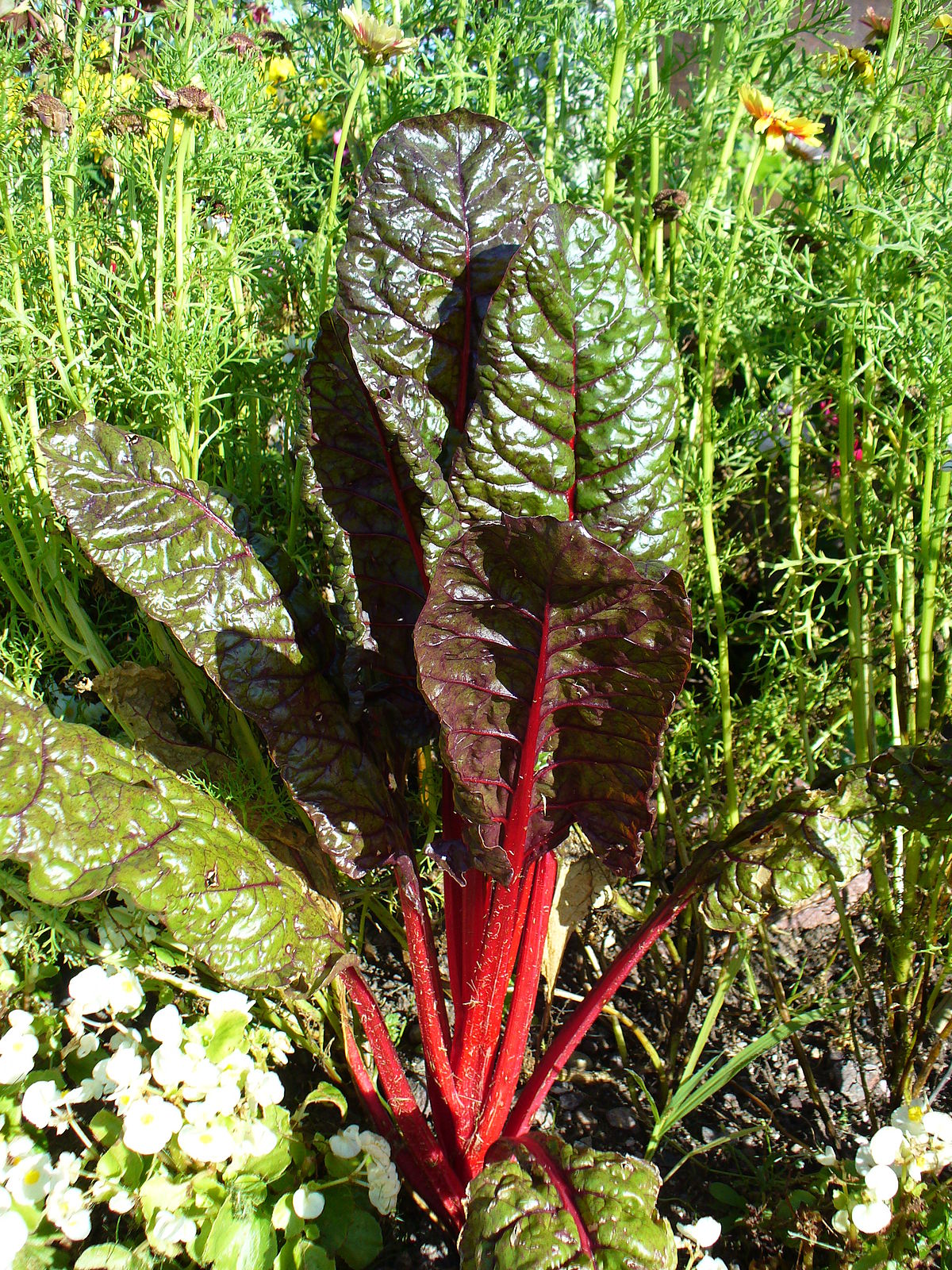Beta vulgaris cicla
(Beta vulgaris cicla)

Description
Beta vulgaris is an herbaceous biennial or, rarely, perennial plant up to 0 cm (rarely 00 cm) height; cultivated forms are mostly biennial. The roots of cultivated forms are dark red, white, or yellow and moderately to strongly swollen and fleshy (subsp. vulgaris); or brown, fibrous, sometimes swollen and woody in the wild subspecies. The stems grow erect or, in the wild forms, often procumbent; they are simple or branched in the upper part,3 and their surface is ribbed and striate.4 The basal leaves have a long petiole (which may be thickened and red, white, or yellow in some cultivars). The simple leaf blade is oblanceolate to heart-shaped, dark green to dark red, slightly fleshy, usually with a prominent midrib, with entire or undulate margin, 5�0 cm long on wild plants (often much larger in cultivated plants). The upper leaves are smaller, their blades are rhombic to narrowly lanceolate. The flowers are produced in dense spike-like, basally interrupted inflorescences. Very small flowers sit in one- to three- (rarely eight-) flowered glomerules in the axils of short bracts or in the upper half of the inflorescence without bracts.3 The hermaphrodite flowers are urn-shaped, green or tinged reddish, and consist of five basally connate perianth segments (tepals), 3-5 � �3 mm, 5 stamens, and a semi-inferior ovary with -3 stigmas.3 The perianths of neighbouring flowers are often fused.5 Flowers are wind-pollinated.
Taxonomic tree:







